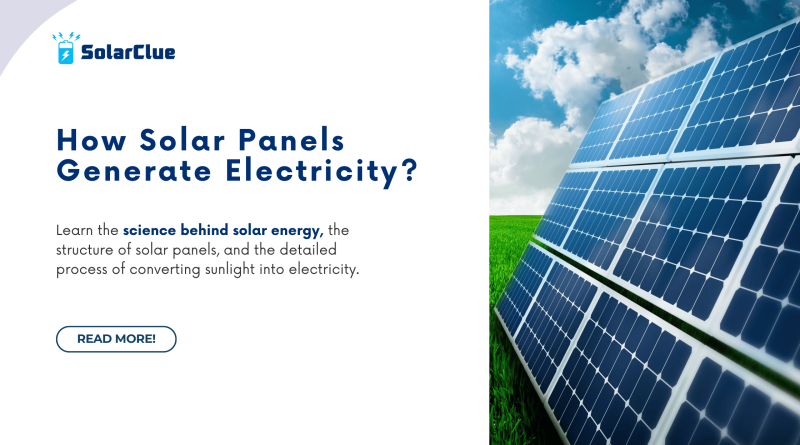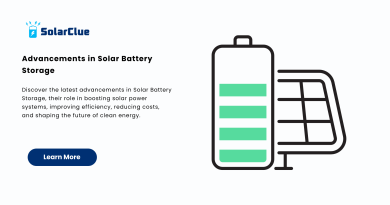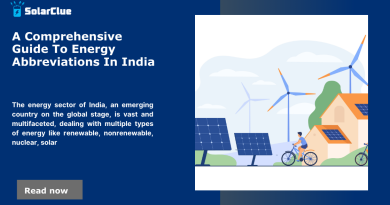How Solar Panels Generate Electricity?
Solar panels are a key technology in the transition to renewable energy sources. This blog will delve into the science behind solar energy, the structure of solar panels, and the detailed process of converting sunlight into electricity. We’ll also explore the factors affecting solar panel efficiency and how to maximize power output.
Table of Contents
The Science Behind Solar Energy
The Photovoltaic Effect
The photovoltaic (PV) effect is the process by which solar cells convert sunlight into electricity. It involves several key components:
- Photons: Particles of light that carry energy.
- Electrons: Subatomic particles with a negative charge.
- Semiconductors: Materials that have properties between those of a conductor and an insulator, used in solar cells to facilitate the PV effect.
When photons from sunlight strike the surface of a solar cell, they transfer their energy to electrons in the semiconductor material. This energy boost allows the electrons to break free from their atomic bonds and flow as an electric current.
Detailed Process
1. Absorption of Sunlight: Photons hit the solar cell and are absorbed by the semiconductor material.
2. Generation of Electron-Hole Pairs: The energy from the photons excites electrons, creating electron-hole pairs (where a hole is the absence of an electron).
3. Separation of Charges: An internal electric field created by the junction between different semiconductor materials (usually p-type and n-type silicon) separates the electrons and holes.
4. Collection of Current: Electrons are collected by metal contacts on the top and bottom of the cell, generating a direct current (DC).
Different Types of Solar Cells
| Type | Material | Efficiency Range | Cost |
|---|---|---|---|
| Monocrystalline | Single silicon crystal | 15-20% | High |
| Polycrystalline | Multiple silicon crystals | 13-16% | Medium |
| Thin-Film | Amorphous silicon or other materials | 10-12% | Low |
Monocrystalline Solar Cells
Made from a single, pure silicon crystal, these cells offer the highest efficiency but are also the most expensive.
Polycrystalline Solar Cells
Composed of multiple silicon crystals, these cells are less efficient than monocrystalline but are more affordable.
Thin-Film Solar Cells
Created by depositing one or more layers of photovoltaic material onto a substrate, these cells are the least efficient but are lightweight and flexible, making them suitable for specific applications.
Structure of a Solar Panel
Solar Cells
Individual solar cells are the basic building blocks of a solar panel. Each cell generates a small amount of electricity.
Modules
Multiple solar cells are connected together to form a solar module. The cells are typically encapsulated in a protective layer to shield them from environmental damage.
Panels
Several solar modules are assembled into a solar panel. The panel includes a frame, glass covering, and backing material for durability and protection.
Array
Multiple solar panels can be connected together to form a solar array, which increases the total power output to meet specific energy needs.
Conversion from DC to AC: The Role of Inverters
Solar panels produce direct current (DC) electricity, but most household appliances and the power grid operate on alternating current (AC). Inverters play a crucial role in this conversion process:
- Inverter Types: There are several types of inverters, including string inverters, microinverters, and power optimizers.
- Function: The inverter converts the DC electricity generated by the solar panels into AC electricity that can be used by household appliances or fed into the grid.
Inverter Efficiency
The efficiency of the inverter affects the overall efficiency of the solar power system. Modern inverters typically have efficiencies of 95-98%.
Factors Affecting Solar Panel Efficiency
| Factor | Impact |
|---|---|
| Angle of Installation | Optimal angle increases sunlight absorption |
| Temperature | High temperatures can reduce efficiency |
| Shading | Even partial shading can significantly reduce output |
| Cleanliness | Dirt and debris can block sunlight |
| Type of Solar Cell | Different materials have varying efficiencies |
How to Maximize Power Output
1. Optimal Placement: Ensure panels are placed at the optimal angle and orientation to receive maximum sunlight.
2. Regular Maintenance: Keep panels clean and free of debris to maintain efficiency.
3. Use of Trackers: Solar trackers adjust the panels’ position to follow the sun, maximizing exposure.
4. Minimize Shading: Avoid placing panels in shaded areas to prevent loss of efficiency.
5. Efficient Inverters: Use high-efficiency inverters to ensure minimal energy loss during DC to AC conversion.
Comparing Solar Panels to Traditional Power Sources
| Parameter | Solar Panels | Traditional Power Sources |
|---|---|---|
| Source of Energy | Sunlight | Fossil fuels, nuclear, etc. |
| Environmental Impact | Low (renewable) | High (pollution, carbon emissions) |
| Operating Costs | Low (after installation) | High (fuel and maintenance costs) |
| Initial Investment | High | Variable |
| Energy Dependence | Independent (decentralized) | Dependent (centralized) |
The Future of Solar Panel Technology
The future of solar technology looks promising with ongoing advancements:
- Higher Efficiency Cells: Research is focused on developing cells with higher efficiencies, such as multi-junction and perovskite solar cells.
- Cost Reduction: Innovations in manufacturing processes aim to reduce the cost of solar panels.
- Energy Storage Integration: Improved battery technology will allow for better storage of solar energy for use during non-sunny periods.
- Building-Integrated Photovoltaics (BIPV): Incorporating solar cells into building materials like windows and roofs to seamlessly integrate solar power generation.
Conclusion
Solar panels represent a vital step toward sustainable energy. By understanding the photovoltaic process, the structure of solar panels, and the factors affecting their efficiency, you can make informed decisions about adopting solar technology. With continuous advancements, solar panels will become even more efficient and affordable, furthering their role in the global energy landscape.
Here at SolarClue®, we offer a smart, practical, and “beautiful” solution. You will be answered for all the questions related to Solar.
We provide all kinds of brands that are the Best Solar panels in India.
If you are the one who is planning for the solar power system. Don’t hesitate to contact our team!
Looking forward to empowering you with solar energy, just like hundreds of our other clients!
FAQs
1. How do solar panels generate electricity?
Solar panels generate electricity through the photovoltaic effect, where sunlight excites electrons in a semiconductor material, creating an electric current.
2. What types of solar cells are available?
The main types are monocrystalline, polycrystalline, and thin-film solar cells, each with different efficiencies and costs.
3. Why do solar panels need inverters?
Inverters convert the direct current (DC) electricity produced by solar panels into alternating current (AC) electricity used by most household appliances and the power grid.
4. What factors affect solar panel efficiency?
Factors include the angle of installation, temperature, shading, cleanliness, and the type of solar cell used.
5. What is the future of solar panel technology?
Future advancements include higher efficiency solar cells, cost reductions, better energy storage integration, and building-integrated photovoltaics.



